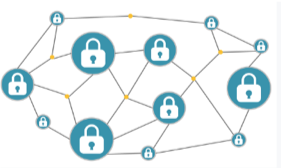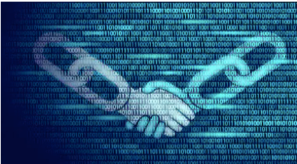Spring has sprung, the flowers are blooming… and so is the use of blockchain technology?
- ChapmanFSNSA
- Apr 13, 2019
- 4 min read
By Diana Bickmore
Imagine the last meal you ate; if you had to list the source of each ingredient you consumed, how long would it take you? Realistically, could you ever expect to encounter the source of each bite? With blockchain technology, this type of instant tracking is becoming a reality.
Blockchain technology, which was debuted by Walmart in September of 2018 for the supply of leafy greens, is a way to keep records of transactions by using a shared public system called a ledger. You may be familiar with blockchain technology from its association with cryptocurrencies such as bitcoin, in which the technology allows unknown parties to publicly transfer funds upon verification of the transaction’s authenticity. To facilitate the implementation of blockchain technology, Walmart has collaborated with IBM for the testing and authentication of blockchain transactions. Once complete, the transactions cannot be modified or erased. Applied to the food supply chain for high risk foods such as meat and produce, blockchain technology functions when the details of a transaction form a “block” possessing a timestamp and reference to the previous blocks, which become linked to each other following authentication. Because the blocks are “chained” by algorithms, it is nearly impossible to rewrite or alter previous records.
Thinking back to why you should care about tracing your meat all the way back to the slaughterhouse or your lettuce to the grower, consider all the outbreaks of food-borne illnesses you have heard about since last year. Unless you’ve been living under a rock, you can probably think of several. Maybe these outbreaks were minor inconveniences, and the shelves were stripped bare of a product you really wanted to buy, or maybe you or someone you know even became seriously ill because of contaminated food. Had the food suppliers been using blockchain technology, it is doubtful that these outbreaks would have had such widespread ramifications.
But surely, you think, even if you personally don’t feel the need to trace the exact origin of each food you consume, your favorite grocery store must have that information stored and easily accessible somewhere, right? Wrong. Until 2018, even Walmart, the largest food retailer in the world in terms of revenue, would not have been able to provide you that information. Instead, they could have provided you with a jumbled mess of phone numbers, handwritten information, email addresses, and faxes. Prior to the implementation of blockchain technology, Walmart conducted a pilot test with sliced mangoes; when traced manually, it took nearly a week to find the farm in Mexico that grew the mangoes, but when blockchain technology was tested, it took only seconds. Although Walmart mandated that blockchain technology be implemented in the supply chain for leafy greens by September 2019, food safety executives have said that they envision extending the technology to other produce and perishable items. QR codes on a product would rapidly link consumers to the origin of the product, meaning that should an outbreak occur, food safety officials could avoid wasted time spent tracking down all the missing links from farm to fork.
As blockchain has steadily been integrated into the food supply chain of major retailers such as Walmart, a quick news search of blockchain and food in the news will generate a plethora of announcements regarding the debut of blockchain in the past few months all over the world. In March 2019, it was announced that the seafood company Bumble Bee Foods has begun to use blockchain to track the fish-to-market process; doing so provides information such as the size of the catch, and point at which the fish was captured. Likewise, the coffee board of India announced a pilot e-marketplace based on blockchain technology to bridge the gap between coffee farmers and consumers, and the largest family owned meat processor in Australia, Thomas Foods signed on to a pilot program based on blockchain technology called IBM Food Trust along with Drakes Supermarket. At the International Agricultural Fair in Paris that took place in February, 2019, the French president, Emmanuel Macron advocated for blockchain technology to be used throughout the European Union.
Of course, with the multitude of companies beginning to incorporate blockchain into their food supply, security considerations in terms of hackers are paramount, even though due to its transparency, blockchain is inherently considered safer than other web-based systems. Due to hacking concerns, IBM has created several patents designated for improving the security of blockchain. One such patent was created for an invention designed to prevent so-called “replay attacks,” in which a hacker “replays” a transaction that they spied on. In this form of attack, blockchain validators subsequently include the transaction in the blockchain, inadvertently repeating it and compromising the attachment of subsequent blocks.
Like any new system, there are concerns such as safety and accuracy that need to be tested before blockchain technology can be more widely implemented. However, given the tremendous benefits of the blockchain technology to consumer safety due to its instantaneous capacity to detect the origin of a food, it is likely that blockchain technology is here to stay. So next time you are at the grocery store, take a good look at the perishable products you’re buying. If you don’t see a QR code linking the product with its origin just yet, you might see one before you know it.








Comments